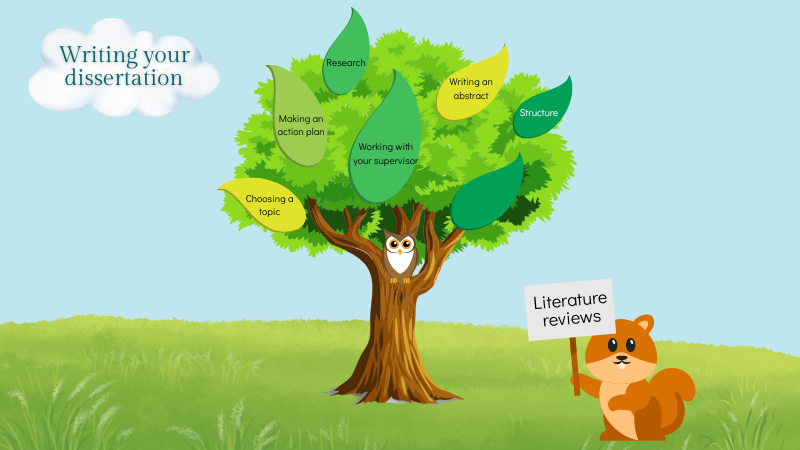If you’ve been asked to write a literature review, either as a stand-alone text (or what’s more likely) as part of a larger piece of writing such as a dissertation, you may be wondering what you are meant to do. What’s the idea behind a literature review? What should you include?
Let’s start by situating the literature review in its usual context. In an essay, dissertation or report, the literature review appears near the start of the piece, right after the introduction.
The introduction and literature review work together to persuade your reader that your project (your essay, dissertation, or report) is needed in the following way:
First, the introduction explains the question to your reader but it should also get across the importance of the question. Tell your reader what’s at stake: what will happen if we don’t answer the question fully and reliably.
Then in the literature review, you show the reader what the literature has done to answer the question but also crucially the ways it has failed to answer the question fully and/or reliably. This is the gap in the literature that your project aims to fill.
This gap is what motivates your project in the reader’s mind.
So, what should you include?
You should include any literature which helps to complete the picture of what we know and don’t know about the question you raised in the Introduction.
This usually involves summarising what the theorists and researchers say, any important criticisms they have of one another’s findings and, crucially, any criticisms you have of their claims.
You should write it once you are familiar with the arguments/findings in the literature, so that you feel confident enough to lead the discussion – to give your reader a short critical tour of the main contributors in the literature and their shortcomings.
The overall aim is to get your reader to agree that the literature does not yet have a satisfactory answer to the question.
How should you organise the literature?
Often, the answer to an academic question evolves over time with studies building on what came before. This means it is usually a good idea to just organise the various studies you include in your literature review in chronological (time) order.
However! Be aware that there are a few disciplines that are not interested in what happened in the past: they just want to know what the current situation is: what we know and don’t know now. To check which approach is right in your discipline, ask your tutor and look at what academics do in their literature reviews.
Even if it is acceptable or even required to include information which not current, be aware that there are other ways to organise the literature than chronologically. The important thing is to make the gap clear and if a different organisation does this better than a chronological account, then use that other organisation.
For example, you may wish to group together all those studies that agree with some idea and have another group for those that disagree with the idea. Or if you have contributions from different disciplines, it may be clearer for your reader to group sources by discipline.
One way for you to see these different organising principles clearly is to create a table (perhaps on Excel) which summarises key information about each source, like this:
| Author | Publication date | Agree (+), Disagree (-), or Agnostic (=) |
| Palin | 2000 | + |
| Jones | 2001 | - |
| Gilliam | 2002 | + |
| Cleese | 2013 | = |
| Idle | 2016 | - |
| Chapman | 2025 | = |
Each line in this table summarises one source. It contains the surname of the author, the year the source was published and whether the source agrees with (+) , disagrees with (-) or is agnostic towards (=) some claim or idea. Notice that these are listed in chronological order. However, as shown below, we can rearrange the items according to the agree/disagree/agnostic column:
| Author | Publication date | Agree (+), Disagree (-), or Agnostic (=) |
| Palin | 2000 | + |
| Gilliam | 2002 | + |
| Cleese | 2013 | = |
| Chapman | 2025 | = |
| Jones | 2001 | - |
| Idle | 2016 | - |
Now all the “Agrees” are together, all the “Disagrees” are together and all the “Agnostics” too. You can then replicate this organisation in your actual literature review if you think it shows the gap more clearly.
Time to write it up!
When you have decided what literature to include and how to organise the individual studies, it’s time to write.
Begin the literature review with an introductory paragraph which explains what the literature review is going to do: specify the gap – the shortcoming in the literature. You may also give the criteria you used to choose the sources. For example, sometimes writers only include recent studies, published after a certain year. If you have used such a rule for inclusion, mention it in this opening paragraph.
Then write the main body according to your chosen organisation (chronological, or by their position on a question etc.) You should lead this discussion. Give your reader a guided critical tour of the literature, commenting as much as you can on the strengths and weaknesses of their research or ideas. Remember! It’s about showing the gap.
Finally, conclude with an overall assessment of how complete an answer to the question the literature as a whole provides.
Related blog posts
We have a number of blog posts about writing your dissertation. Make sure you check these out so that you're ready to get started:
- Writing your literature review
- Making the most of expert and peer support
- Choosing a topic
- Making an action plan
- Working with your supervisor
- Research (developing your research question, creating your working title and developing your research proposal)
- Structuring your dissertation (including contents, sections, and designing an effective structure)
- Writing an abstract
Further support
If you'd like some further support on writing your dissertation, we offer 1:1 tutorials both online and in-person. Tutorials are available throughout the summer, and slots become available 14 days in advance. You can see what's available, and book a tutorial, in MySkills.
Respond



